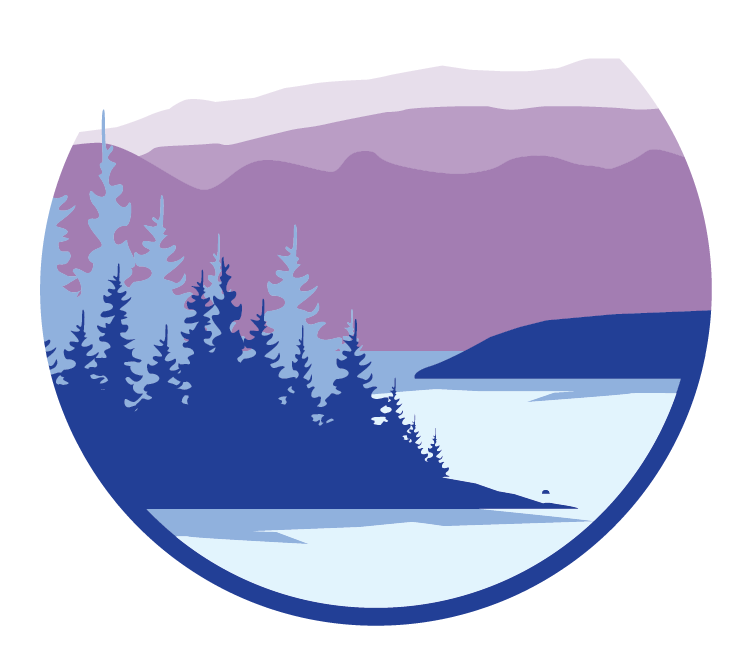Flathead Lake and rivers facing record low water levels this summer
Why are Flathead Lake levels 2 feet below record low levels?
What we are seeing this summer is a result of warmer than usual temperatures in high mountain elevations in May causing snow to melt earlier in the spring. “Snow disappeared quickly this spring”, said Eric Larson, USDA Natural Resources Conservation Service water supply specialist. Nearly all the snow in the Flathead River Basin above Flathead Lake melted by early June, shown in the USDA Natural Resources Conservation Service SNOTEL reports.
Where did the water go?
Snow in the mountains usually melts slowly throughout the summer feeding our rivers, lakes, and aquifers. But most of our snow melted early – you likely noticed the the high flowing rivers and streams this spring. Climate change models predicted that warming temperatures could lead to shorter winters, early spring snowmelt, and possibly spring flooding. We are seeing these predictions come true.
The U.S. Drought Monitor reports that Flathead County is in a moderate to severe drought since June. In fact, Northwest Montana has been experiencing a long-term deficit of 20 or more inches of precipitation over the last five years. Kalispell had its 10th-driest June on record, with less than one quarter of its typical precipitation. “This does not bode well for groundwater either, which is currently drier than 97% of all other years,” said Dan Borsum, a meteorologist with the Bureau of Land Management and the Northern Rockies Predictive Center, in the Daily Inter Lake.
Fire season is also expected to get intense soon due to intense heat waves adding to existing conditions. Learn more at MT Fire Info about current fires, air quality outdoors, and how to prepare and stay safe.
When drought impacts our landscapes, the fish and wildlife that depend on them, it also impacts farmers and the local economy. In the Flathead, that also includes tourism, boating, and recreational activities – our way of life.
Why can’t the dam operators above and below Flathead Lake keep lake levels at full pool?
This is a complex issue that directly impacts river systems and state power supplies across the Columbia River Watershed cannot be solved by simply stopping the outflow from Se̓liš Ksanka Qĺispe̓ (SKQ) Dam or drawing from Hungry Horse Dam.
“Drawing down Hungry Horse Reservoir more than the Sept. 30 target, which is 12 or more feet below full pool, would impact the Flathead River system negatively, impact native fish in the reservoir, and reduce hydropower generation in the winter when electricity needs are high,” said Brian Marotz, former hydropower mitigation coordinator for Montana Fish, Wildlife and Parks in a recent Daily Inter Lake publication.
The SKQ Dam is highly regulated by the federal government, through FERC (the Federal Energy Regulatory Commission), and Energy Keepers works closely with the Army Corps of Engineers, who must agree to each of their decisions around water levels.
Why are scientists and weather reporters saying that climate change is making things worse?
Warming temperatures globally are causing havoc for people and landscapes. Over the past century, the northern Rocky Mountains have warmed two to three times the rate of the global average. Impacts we are seeing include earlier spring snow melt (2-3 weeks earlier), reduced summer and fall flows, warmer and drier summers (with more extreme hot days and longer droughts), and severe and frequent fires. Learn more in the 2017 Montana Climate Assessment.
What can we do?
Stay informed and stay safe. Check weather forecasts, predicted temperatures and storms, and stay hydrated and cool. Check out Discover Kalispell for information on recreating safely in our outdoors.
Be water wise. Reduce how much water you use in the garden. Sprinkle at dawn and dusk every other day or less, use soaker hoses versus sprinklers, and don’t water while it’s raining. Also consider planting native plants next spring (which require less water after established), and installing rain barrels (mosquito-proof containers) to collect rainwater from rooftops and use it to water your garden. Check out these Water Saving Tips.
Check whether your city has passed water restrictions. Kalispell has currently passed Stage 1 restrictions which are voluntary. However, they hope to avoid having to pass water conservation restrictions should water use become unsustainable.
Protect wetlands in your area. Wetlands often have water saturated soils and water loving plants. When connected to the groundwater, wetlands can act like water “sponges”, slowly recharging groundwater aquifers when the water table is low. Wetlands are also incredibly valuable. They make up about 5% of the landscape in Montana, yet over 60% of our native species rely on these areas at some point in their life.
Join one of our Climate Cafes, in Polson, Lakeside or Kalispell, an open, respectful, accepting space for people who are concerned about the climate crisis to gather, to talk, to share their thoughts, to share personal stories, to explore how to take personal, community, and global action, as well create a climate resilient Montana.
Learn more about Climate Solutions for Montana.


